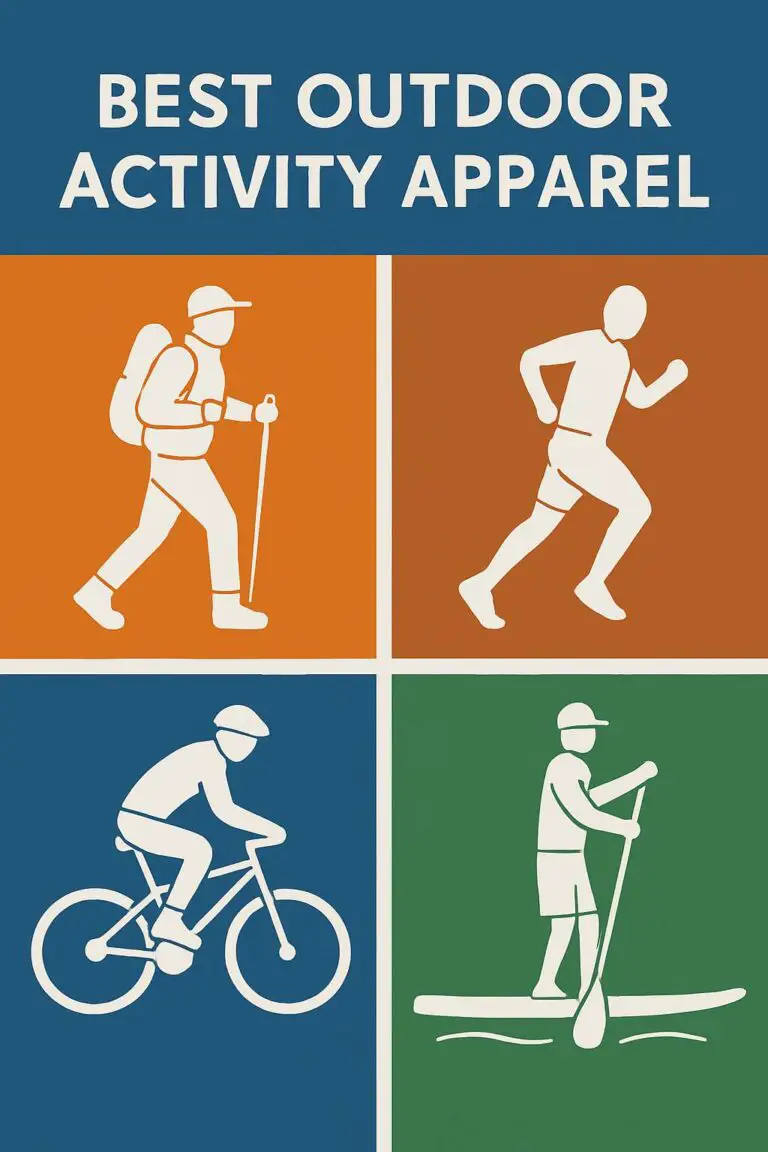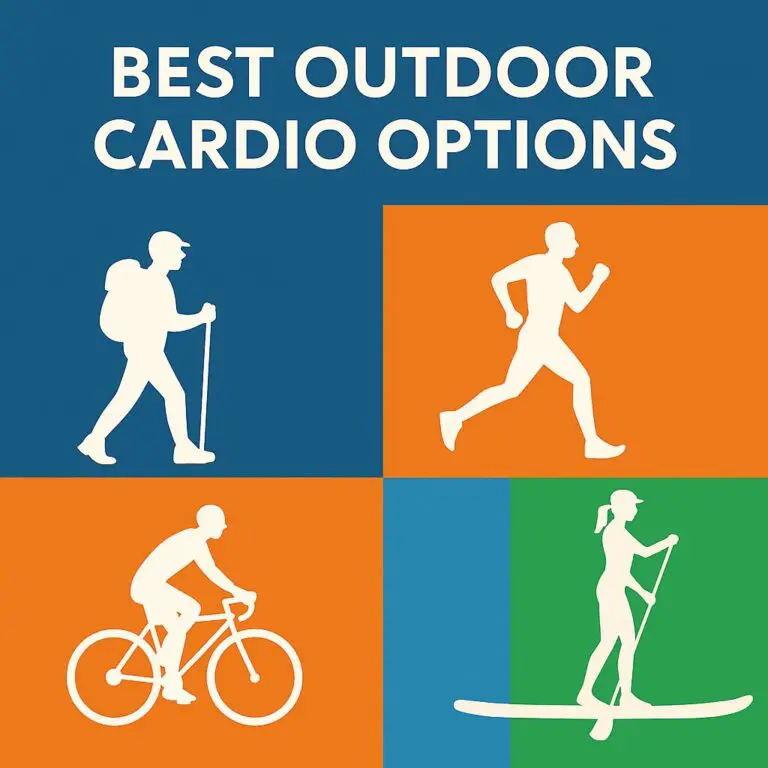In this article, I’ll cover the essential do’s and don’ts of outdoor activities to help you make the most of your time outdoors while staying safe and respecting the environment. Whether you’re a seasoned adventurer or a beginner, these tips will come in handy on your next outdoor excursion.
Outdoor activities offer numerous physical and mental health benefits, and they’re a great way to connect with nature and disconnect from the hustle and bustle of daily life. However, to ensure a safe and enjoyable experience, it’s important to follow certain guidelines.
So, let’s dive in!
The Dos in Outdoor Activities
When it comes to outdoor activities, there are many things you can do to ensure a safe and enjoyable experience. From staying hydrated to respecting the environment and wildlife, here are 8 essential “Dos” to keep in mind.
1. Wear appropriate clothing and gear
Wearing appropriate clothing and gear is crucial when it comes to outdoor activities. It not only keeps you comfortable but also helps to keep you safe. Here are some tips to keep in mind:
- Dress in layers: Wearing layers allows you to adjust your clothing to changing weather conditions. Start with a moisture-wicking base layer, add insulating layers, and finish with a waterproof and windproof outer layer. Base Layer | Insulating Layer | Outer Layer
- Wear appropriate footwear: Choose sturdy, comfortable shoes that are appropriate for the terrain. For hiking, wear boots with good ankle support and traction. Hiking Boots
- Protect your head and eyes: Wear a hat to protect your head from the sun and to keep you warm in colder temperatures. Sunglasses can help protect your eyes from harmful UV rays. Hat | Sunglasses
- Use sunscreen: Protect your skin from the sun’s harmful rays by using sunscreen with a high SPF. Sunscreen
- Consider the activity: Depending on the activity, you may need specific gear such as a helmet for cycling or a life jacket for water activities. Cycling Helmet | Life Jacket
2. Stay hydrated
Staying hydrated is essential when it comes to outdoor activities. Dehydration can lead to headaches, dizziness, and even heat stroke. Here are some tips to help you stay hydrated:
- Drink water before you start: It’s important to start hydrating before you even begin your outdoor activity. Drink a glass or two of water at least 30 minutes before you start.
- Bring enough water: Make sure to bring enough water for the entire duration of your activity. The amount you need will depend on the activity, weather, and your individual needs. Hydration Pack
- Drink regularly: Take regular sips of water throughout your activity, rather than waiting until you’re thirsty.
- Consider electrolyte replacement: If you’re sweating a lot, you may need to replace electrolytes lost through sweating. Consider drinking an electrolyte replacement beverage or eating foods high in electrolytes, such as bananas or nuts. Electrolyte Tablets
- Pay attention to urine color: One way to gauge your hydration levels is to pay attention to the color of your urine. Aim for a pale yellow color, which indicates good hydration.
3. Know your limits and abilities
Knowing your limits and abilities is crucial when it comes to outdoor activities. Pushing yourself beyond what you’re capable of can result in injuries or accidents. Here are some tips to help you know your limits and abilities:
- Be honest with yourself: It’s important to be honest with yourself about your physical fitness level, experience, and any health conditions that may affect your ability to participate in the activity.
- Choose an activity that’s appropriate for you: Consider your fitness level, experience, and any health conditions when choosing an activity. Start with something that’s within your abilities and gradually work your way up.
- Take breaks when needed: Listen to your body and take breaks when needed. Don’t push yourself beyond your limits.
- Know when to turn back: If you’re feeling tired or unwell, it’s important to know when to turn back. Continuing when you’re not feeling well can lead to accidents or injuries.
- Consider hiring a guide: If you’re new to an activity, consider hiring a guide who can help you navigate the activity safely and provide instruction as needed. Outdoor Guide Services
4. Plan ahead and prepare
Planning ahead and preparing for your outdoor activity is important to ensure a safe and enjoyable experience. Here are some tips to help you plan ahead and prepare:
- Research the area: Before heading out, research the area you’ll be visiting. Look for any potential hazards or risks, and be aware of any rules or regulations.
- Check the weather: Check the weather forecast before you go and prepare accordingly. Bring appropriate clothing and gear for the conditions.
- Bring a map and compass: Even if you’re using a GPS device or app, it’s important to bring a map and compass as backup. Make sure you know how to use them. Map and Compass
- Bring a first aid kit: Accidents can happen, so it’s important to bring a first aid kit with you. Make sure it contains the basics, such as bandages, antiseptic, and pain relievers. First Aid Kit
- Let someone know your plans: Before heading out, let someone know your plans, including where you’ll be going and when you plan to return.
- Bring necessary equipment: Depending on the activity, you may need specific equipment such as a tent for camping or a kayak for water activities. Make sure you bring everything you need. Camping Tent | Kayak
5. Respect the environment and wildlife
Respecting the environment and wildlife is essential when it comes to outdoor activities. Here are 5 tips to help you respect the environment and wildlife:
- Stay on designated trails: Stay on designated trails to avoid damaging the environment and disrupting wildlife habitats.
- Pack out all trash: Leave no trace behind and pack out all trash, including food scraps and toilet paper. Trash Bags
- Avoid disturbing wildlife: Observe wildlife from a distance and avoid approaching or feeding them. Don’t disturb their habitats or nesting areas.
- Leave natural features and resources undisturbed: Don’t remove rocks, plants, or other natural features. Leave everything as you found it.
- Follow any posted signs or regulations: Respect any posted signs or regulations, such as no camping or no fishing areas.
6. Use proper trail etiquette
Using proper trail etiquette is important to ensure a safe and enjoyable experience for everyone. Here are some tips to help you use proper trail etiquette:
- Yield to other hikers: Yield to other hikers going uphill and staying to the right side of the trail when passing others.
- Announce yourself when passing: When passing other hikers, announce your presence by saying “on your left” or “on your right”.
- Stay on the right side of the trail: Stay on the right side of the trail unless passing other hikers.
- Don’t block the trail: Don’t block the trail when taking breaks or enjoying the scenery. Move to the side to allow others to pass.
- Keep pets on a leash: If you’re hiking with a pet, keep them on a leash to avoid disrupting other hikers or wildlife. Pet Leash
- Don’t use earbuds: Avoid using earbuds or headphones while on the trail, as it can make it difficult to hear other hikers approaching.
- Respect equestrians and mountain bikers: Yield to equestrians and mountain bikers and be mindful of their needs and abilities.
7. Be mindful of the weather
Being mindful of the weather is important to ensure a safe and comfortable outdoor experience. Here are some tips to help you be mindful of the weather:
- Check the forecast: Check the weather forecast before you go and be prepared for any changes in weather.
- Dress appropriately: Dress in layers and wear appropriate clothing for the weather conditions. Bring rain gear if rain is in the forecast. Rain Gear
- Protect yourself from the sun: Wear a hat and sunscreen to protect yourself from the sun’s harmful rays. Bring sunglasses to protect your eyes.
- Be aware of thunderstorms: If there’s a chance of thunderstorms, avoid open areas and seek shelter in a low-lying area.
- Know the signs of hypothermia and heat exhaustion: Be aware of the signs of hypothermia and heat exhaustion, and take appropriate action if necessary.
Remember, weather conditions can change quickly, so it’s important to be prepared for any scenario.
8. Leave no trace
Leaving no trace is important to minimize our impact on the environment and to ensure that future generations can enjoy the same outdoor experiences. Here are 6 steps to help you leave no trace:
- Pack out all trash: Pack out all trash, including food scraps and toilet paper. Leave no trace behind.
- Minimize campfire impact: If you’re building a campfire, use a designated fire ring or build one in a durable location. Make sure to fully extinguish the fire and pack out any remaining ashes. Fire Starter
- Respect wildlife: Observe wildlife from a distance and avoid disturbing their habitats or feeding them.
- Stay on designated trails: Stay on designated trails to avoid damaging the environment and disrupting wildlife habitats.
- Leave natural features and resources undisturbed: Don’t remove rocks, plants, or other natural features. Leave everything as you found it.
- Respect other visitors: Be respectful of other visitors and avoid making excessive noise or disrupting their experience.
By leaving no trace, you’ll help preserve the environment and ensure that others can enjoy the same outdoor experiences in the future. Remember, we’re all guests in nature, and it’s our responsibility to leave it in the same condition as we found it.
The Don’ts in Outdoor Activities
While there are many things you should do when participating in outdoor activities, there are also certain things you should avoid. From littering to engaging in risky behavior, here are 7 essential “Don’ts”.
1. Don’t litter
Littering is harmful to the environment and can harm wildlife. Here are 5 tips to help you avoid littering:
- Pack out all trash: Pack out all trash, including food scraps and toilet paper. Leave no trace behind.
- Use designated trash cans: If trash cans are available, use them to dispose of your trash properly.
- Avoid single-use plastics: Bring reusable containers and avoid using single-use plastics such as water bottles or plastic utensils. Reusable Water Bottle
- Dispose of cigarette butts properly: If you smoke, dispose of cigarette butts properly. They can take years to decompose and can harm wildlife if ingested.
- Don’t leave anything behind: Before leaving a campsite or picnic area, double-check that you haven’t left anything behind.
Even small items like cigarette butts can have a significant impact on the environment.
2. Don’t disturb the wildlife
Disturbing wildlife is harmful to the environment and can harm the animals themselves. Here are some tips to help you avoid disturbing wildlife:
- Observe wildlife from a distance: Observe wildlife from a distance and avoid approaching or feeding them.
- Keep a safe distance: Keep a safe distance from wildlife, especially if you’re taking photographs. Use binoculars or a telephoto lens to get a closer look. Binoculars
- Respect nesting areas: Avoid disturbing nesting areas or habitats. Keep your distance and observe from afar.
- Don’t feed wildlife: Don’t feed wildlife, as it can disrupt their natural feeding patterns and make them reliant on humans for food.
- Follow park regulations: Follow any posted regulations or signs regarding wildlife, such as not approaching sea turtle nesting areas.
3. Don’t rely solely on technology
While technology can be helpful, it’s not always reliable. Here are 5 steps to help you avoid relying solely on technology:
- Bring a map and compass: Bring a map and compass as backup, even if you’re using a GPS device or app.
- Know how to use a map and compass: Make sure you know how to use a map and compass and practice your skills before heading out.
- Bring extra batteries: Bring extra batteries for your GPS device or phone in case they run out of power. Extra Batteries
- Plan your route ahead of time: Plan your route ahead of time and bring a printed copy of your route in case your technology fails.
- Be aware of cell phone coverage: Be aware of cell phone coverage in the area you’ll be visiting. Don’t rely on your phone for communication or navigation if there’s no coverage.
Technology can fail or be unreliable, so it’s important to have backup options in case of an emergency.
4. Don’t underestimate the terrain
Underestimating the terrain can be dangerous and lead to accidents. Here are some steps to help you avoid underestimating the terrain:
- Research the area: Before heading out, research the area and familiarize yourself with the terrain and any potential hazards.
- Consider the difficulty level: Consider the difficulty level of the activity and choose one that’s appropriate for your fitness level and experience.
- Know your limits: Be honest with yourself about your physical fitness level and experience, and don’t push yourself beyond your limits.
- Bring appropriate gear: Bring appropriate clothing and gear for the terrain and weather conditions.
- Bring extra food and water: Bring extra food and water in case your activity takes longer than expected. Snacks
- Follow safety guidelines: Follow safety guidelines, such as staying on designated trails and avoiding dangerous areas.
Safety should always be a top priority, and it’s better to err on the side of caution than to take unnecessary risks.
5. Don’t forget to inform someone of your plans
Informing someone of your plans is important in case of an emergency or if you don’t return on time. Here are some tips to help you avoid forgetting to inform someone of your plans:
- Tell someone your plans: Before heading out, tell someone your plans, including where you’ll be going, the route you’ll be taking, and when you plan to return.
- Leave a detailed itinerary: Leave a detailed itinerary with someone, including the names and phone numbers of other members in your group.
- Update your contact person: If your plans change, make sure to update your contact person so they know where to find you.
- Bring a personal locator beacon: Bring a personal locator beacon if you’re heading into a remote area without cell phone coverage. Personal Locator Beacon
- Check-in regularly: Check in with your contact person regularly, especially if your plans change or you’re delayed.
6. Don’t trespass on private property
Trespassing on private property is illegal and can be dangerous. Here are some tips to help you avoid trespassing on private property:
- Know the property boundaries: Be aware of the property boundaries and avoid crossing onto private property without permission.
- Respect “No Trespassing” signs: If you see “No Trespassing” signs, respect them and avoid entering the area.
- Get permission: If you want to explore private property, get permission from the owner first.
- Be respectful: If you do get permission to enter private property, be respectful and follow any guidelines or rules set by the owner.
- Know the consequences: Understand that trespassing on private property can result in legal consequences, such as fines or arrests.
It’s important to respect the rights of private property owners and follow the law.
7. Don’t engage in risky behavior
Engaging in risky behavior can be dangerous and lead to accidents or injuries. Here are 5 tips to help you avoid risky behavior:
- Follow safety guidelines: Follow safety guidelines and rules, such as staying on designated trails or wearing appropriate safety gear.
- Know your limits: Be honest with yourself about your physical fitness level and experience, and don’t push yourself beyond your limits.
- Avoid taking unnecessary risks: Avoid taking unnecessary risks, such as attempting a difficult trail or going out in dangerous weather conditions.
- Stay focused: Stay focused and avoid distractions, such as using your phone or taking photos in dangerous areas.
- Don’t use drugs or alcohol: Don’t use drugs or alcohol when participating in outdoor activities, as it can impair your judgment and reaction time.
Conclusion
In conclusion, outdoor activities are a great way to enjoy nature and improve your physical and mental health. However, it’s important to follow certain guidelines to ensure a safe and enjoyable experience. By following the dos of outdoor activities, such as wearing appropriate clothing and gear, staying hydrated, and respecting the environment, you’ll be able to fully enjoy your time outdoors.
Additionally, by avoiding the don’ts, like littering, disturbing wildlife, and engaging in risky behavior, you’ll help preserve the natural environment for future generations to enjoy.
So, next time you head out for an outdoor adventure, keep these do’s and don’ts in mind and have a great time!




